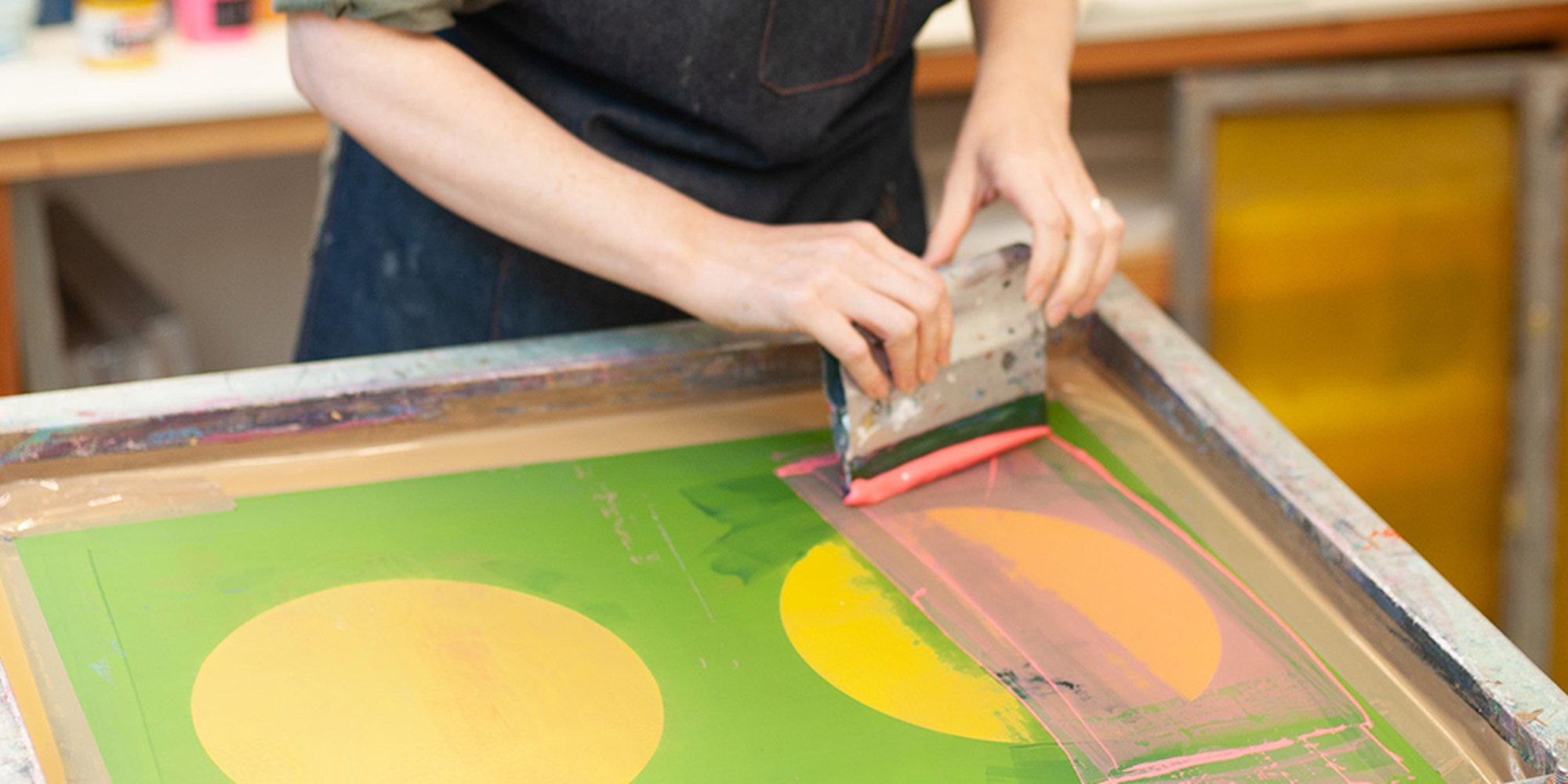The Vital Guide to Recognizing Screen Printing and Its Versatile Utilizes
Screen printing has an abundant history that goes back to ancient times, advancing into an innovative method used throughout various sectors today. This guide discovers the complexities of the screen printing procedure, outlining its applications in marketing, style, and home style - 10:9 Design reviews. Understanding these basics can open creative capacity for both business and artistic tasks. The following sections will certainly disclose important ideas and strategies to enhance one's screen printing endeavors
The Background of Screen Printing
Screen printing has origins that map back centuries, its evolution shows the technological and creative innovations of numerous societies. Coming from old China, the technique was initially used for decorating textiles and later spread to Japan, where it ended up being important to Ukiyo-e woodblock printing. The method changed to Europe in the 18th century, where it got popularity among craftsmens and industrial printers. The invention of photo emulsion in the 20th century transformed screen printing, enabling even more elaborate designs and better performance. Artists like Andy Warhol even more drove its appeal, utilizing the medium to create iconic jobs that mixed commercialism and fine art. By the late 20th century, screen printing had established itself as a functional strategy, utilized in fashion, advertising, and art. Today, it remains to progress, integrating digital technology and increasing its applications throughout different industries.
The Screen Printing Process Explained
Screen printing changes creative visions into tangible designs through a series of exact actions. At first, a picture is produced and afterwards moved onto a screen, typically made of great mesh textile extended over a frame. A light-sensitive solution is put on the screen, which is exposed to light, solidifying in areas not covered by the photo. After cleaning out the unhardened emulsion, a pattern is formed.
Next off, the screen is put over the substrate, whether it be textile, paper, or one more product. Ink is then pressed through the open areas of the stencil utilizing a squeegee, transferring the style onto the substratum below. This procedure can be repeated for several shades, requiring different displays for every tone. Lastly, the published item is treated making use of heat to ensure the ink sticks correctly, causing a durable, vivid layout ready for use.
Sorts Of Screen Printing Techniques

Additionally, specialized techniques, such as discharge screen printing, get rid of dye from the fabric to develop softer prints, while foil screen printing applies metal foil to achieve a glossy finish (10:9 Design near me). Each technique supplies unique attributes, satisfying various creative demands and production ranges, ultimately increasing the possibilities within the screen printing domain name
Applications of Screen Printing in Various Industries

Furthermore, the signage and advertising and marketing sectors utilize screen printing for producing eye-catching screens and banners. This approach permits strong shades and elaborate styles that catch focus. In electronic devices, screen printing is utilized for using conductive inks to motherboard, essential for element links. The home decoration sector welcomes screen printing to produce distinctive link designs on textiles and wall art. In general, screen printing offers as an important device throughout varied areas, improving items with customized and aesthetically enticing graphics.
Tips for Effective Screen Printing Projects
While taking on a screen printing project, cautious focus to detail can substantially enhance the last outcome. Choosing premium materials is important; this includes the screen, inks, and substratums. Making use of proper mesh counts can affect ink deposition and detail resolution. Preparation is just as crucial; complete cleaning of screens and proper direct exposure times ensure crisp prints.
Next off, exact registration is vital for multi-color prints. Utilizing placement devices can assist achieve specific layering. In addition, testing prints on scrap materials before production helps recognize prospective issues without throwing away resources.

Often Asked Inquiries
What Products Are Ideal for Screen Printing on Material?
Cotton and polyester blends are suitable for screen printing on material due to their resilience and ink absorption. Additionally, specialty textiles like silk or canvas can generate special structures and coatings, boosting the overall design top quality.
Just how Do I Clean and Maintain Screen Printing Equipment?
To clean and keep screen printing equipment, one should on a regular basis wash screens with ideal solvents, evaluate mops for wear, lubricate relocating components, and store all items in a completely dry, dust-free atmosphere to prolong their life-span.
What Are the Ecological Effects of Screen Printing?
Screen printing can have significant ecological effects, including chemical waste from inks and solvents, water use during cleansing procedures, and energy intake. Environment-friendly materials and lasting methods are vital for minimizing these adverse impacts.
Can Screen Printing Be Done in the house Successfully?
Screen printing can be properly done at home with the right products and techniques. Enthusiasts can create high quality prints, though success depends on their ability degree, devices, and understanding of the procedure involved.
What Are the Expenses Connected With Beginning a Screen Printing Business?

Beginning a screen printing business includes expenses for tools, products, and workspace. Initial costs commonly range from a few hundred to several thousand dollars, depending upon the scale, top quality of machinery, and desired production capability.
Screen printing has a rich background that dates back to old times, advancing right into a sophisticated strategy used throughout different industries today. An additional strategy, rotary screen printing, uses round screens, promoting continual printing on textile rolls, therefore boosting performance for large manufacturings. In addition, specialized methods, such as discharge screen printing, eliminate dye from the material to produce softer prints, while foil screen printing applies metal aluminum foil to attain a glossy surface. In the fashion industry, screen printing is widely used to create vibrant layouts on garments, making it possible for brands their website to showcase their unique designs. Cotton and polyester blends are ideal for screen printing on fabric due to their toughness and ink absorption.